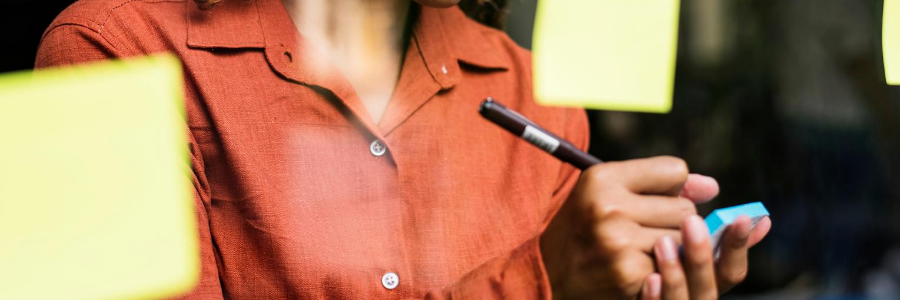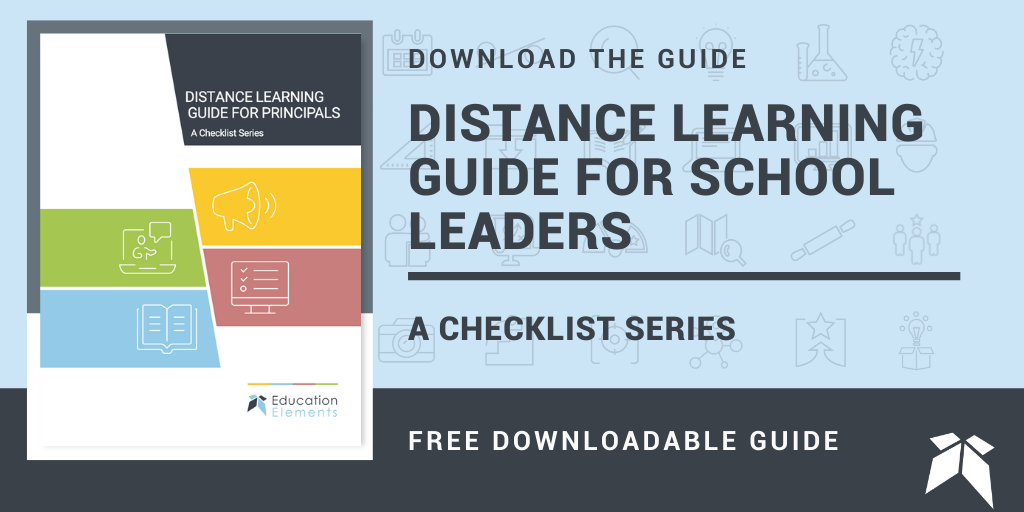
By: Noah Dougherty and Drew Schantz on August 11th, 2020
Distance Learning Requires a Student-Centered Approach
Classrooms | Virtual Learning | School Leadership
Regardless of where students are physically learning this school year, educators must orient their instruction towards distance learning. An orientation towards distance learning allows for continuity of meaningful learning experiences despite changing circumstances or disruptions to the school calendar, whether it be an isolated power outage or a global pandemic. It is important to note that highly-effective distance learning doesn’t just happen with the flip of a switch. It requires thoughtful, intentional design decisions fueled by a desire to empower students to drive their own learning. Ultimately, distance learning requires a student-centered approach to ensure more impactful and equitable learning outcomes for all students.
A student-centered approach:
- Requires a student-teacher relationship grounded in deep understanding and genuine care.
- Personalizes the instruction and content each student receives.
- Provides equitable support to ensure all students can engage in grade-level work.
- Engages all stakeholders as partners who are each uniquely qualified to support students.
What is Distance Learning?
Distance learning occurs when students, their peers, and their teachers engage in a learning experience from different geographical locations, either synchronously or asynchronously, and may or may not be facilitated by the use of technology.
Student-centered distance learning allows for multiple opportunities for educators, students, and families to engage in the educational experience in new and meaningful ways when implemented with high fidelity.
“The essence of strategy is choosing what not to do.”
– Michael Porter
How to Implement Student-Centered Distance Learning
There are several workstreams that need to be established and maintained for distance learning to be successful. Some of these work streams are more important than others during different times during the school calendar. The following framework is meant to prioritize action items for school leaders so that the work of one stage helps to level-up the work of the following stage. Stages should be completed in 1-3 weeks.
| Stage: Focus | Focused Priorities |
| Before the start of school | |
|
Stage 0: Create Clear Communication Structures |
|
| Start of school | |
|
Stage 1: Strengthen Relationships and Student Engagement Through Strong Routines and Structures |
|
|
Stage 2: Equip Educators with High-Leverage Instructional Strategies |
|
|
Stage 3: Double Down on High-Quality Instruction |
|
Each of these workstreams has its own checklist for school leaders. There is also a teacher checklist that aligns with this framework.You can download the checklist series here for your use. Once you download the file, you’ll receive the following checklists:
- Communications - School Leader Checklist
- Student Relationships and Engagement - School Leader Checklist
- Technology Routines and Procedures - School Leader Checklist
- Instructional Models - School Leader Checklist
- Curriculum - School Leader Checklist
- Teacher Checklist for Online Learning
While highly-effective distance learning takes time to implement with fidelity, we hope the checklists found in this guide help your school and district level-up the distance learning experience to be more responsive and centered around student needs.
A special thanks to our colleagues Elizabeth Lambert, Cristina Strunk, Jill Thompson, and Justin Toomer for their help creating the accompanying checklists.
More Virtual Learning reading
Blog: Tips For Setting Up An At-Home Learning Environment For Young Students
Blog: Adaptations for Flexible Learning
Blog: What Do Students Need Right Now?
Blog: 7 Strategies to Develop Student Executive Functioning Skills for Remote Learning
Blog: Addressing Schooling Loss in Schools With These Four Strategies
Blog: Shifts in Professional Learning: more microlearning and virtual courses
About Noah Dougherty and Drew Schantz
Noah Dougherty is an Associate Partner at Education Elements who loves supporting schools to design student-centered learning experiences that are transformative and culturally responsive. He has partnered with districts across the country to work on strategic planning; personalized learning; curriculum adoption; return to school planning; and diversity, equity, and inclusion. Drew Schantz is a Senior Design Principal on the Design and Implementation team. He is passionate about solving complex problems through an entrepreneurial lens and working with others to develop innovative, student-centered, and equity-driven practices that improve outcomes for all students.


